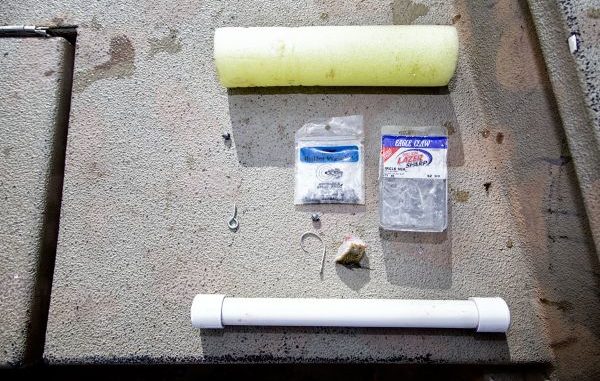
Jug fishing for catfish isn’t a very specialized endeavor, but following the advice of somebody who has been tweaking his jug fishing for the last seven or eight years will serve you well in your own foray into jug fishing.
Mike Lantz’s homemade jugs have been modified over time because of baits that continually dragged the bottom, bait that got pulled to the surface and boats that were too full of milk jugs.
“I read a while back about how to make jugs out of PVC pipe,” Lantz said. “I sat down and made some like I had read about, but I kept learning little lessons that made me change little bits and pieces of my own jugs.”
Now Lantz constructs what he considers to be a perfect jug for the way he fishes — and all he needs is a pool noodle, PVC pipe, PVC end caps, eye bolts, nylon string, a circle hook and a split shot.
Here’s how he builds his jugs:
• Pool noodle — Lantz buys the noodles that can be found at just about any store that sells swimming supplies during the summer. Over time, he has stuck with yellow because of their visibility on the water in a slight chop. He cuts his pool noodles into 10-inch long sections.
• PVC pipe — Lantz has found that 3/4-inch PVC pipe fits perfectly in the readily available pool noodles popular at most stores. He buys a 10-foot section and cuts it into 12-inch pieces.
• PVC caps — Although his jugs will work without these caps, Lantz uses caps each end of his PVC pipe to help keep the pool noodle securely on the pipe.
• Eye bolt — Any kind of little eye bolt with some good thread on it and an eye large enough to tie a line to it will work. Lantz drills a small pilot hole into one of the PVC caps and screws the bolt in.
Although he’s never lost a fish because of an eye bolt that pulled out, he said to secure it with some Loctite or Super Glue if you’re unsure.
• Nylon string — Color makes no difference, according to Lantz. He just uses a piece of 2 1/2- to 3-foot regular nylon string and ties one end to the eye bolt on the PVC end cap using a bowline knot. He likes using lighter string rather than heavier in case he gets hung.
• 6/0 circle sea hook — Lantz said he’s caught catfish as small as a half pound and as large as 25 pounds on these 6/0 hooks. He likes the larger hook because it holds up to the pressure of a big catfish without discriminating against small fish.
He uses another bowline knot to tie his hook to his nylon string.
• 1/16-ounce split shot — This little weight added to the line a few inches above the hook helps keep the bait down in the water when the wind or current starts moving a jug quickly across the surface.
• Cut bait — A plethora of baits exist that will attract catfish, but Lantz has settled on cut bait because he learned it stays on his hooks better, and the smell attracts the blue cats and channel cats he targets. Anglers after flathead catfish should stick with live bream.













